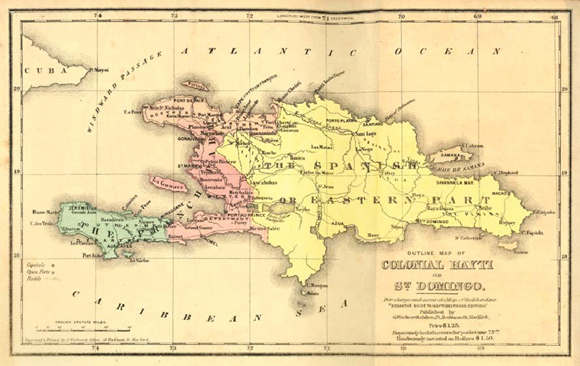Haiti Libre reports that their Governmental Commission for the Binational Dialogue on 7 January in Ouanaminthe will be chaired by the Prime Minister, Laurent Lamothe. The other members are Minister of Foreign Affairs Pierre Richard Casimir, the Minister of Commerce Wilson Laleau, of Minister of the Interior, David Bazile and economist Nesmy Manigat.
For its part, the Dominican Commission, chaired by Minister of the Presidency Gustavo Montalvo, Minister of Interior and Police Jose Ramon Fadul, the Minister of Trade and Industry, Jos? del Castillo, Deputy Minister of Foreign Affairs, acting Chancellor, Jos? Manuel Trullols and Legal Consultant of the Executive C?sar Pina Toribio.
Haiti Libre reports:
The mandate of the Bilateral Commission is to find a consensus and acceptable solutions in order to empty of all dispute between the two countries on migration issues,commercial exchanges, border security and regularization of binational markets. Haitian and Dominican authorities have made a firm commitment to amicably resolve the various problems between the two countries...
This first of a series of meetings will serve essentially to define the working agenda of future meetings.
The two parties also agreed so that representatives of the European Union, Venezuela, CARICOM, the UN and a member of the Haitian private sector, Ms. Norma Powell, are present, as an observers
This resumption of high-level dialogue, is scheduled for Tuesday, January 7, 2014 in Juana Mendez in the commune of Ouanaminthe (North-East of Haiti), in front of the Dominican town of Dajabon.
Gustavo Montalvo, said in an official statement that "The Dominican Government encourages the desire to build a relationship of trust, that allows to work together for the welfare of both peoples..."
Haiti - Dominican Republic : Haiti formed his Binational Commission for Dialogue - HaitiLibre.com, Haiti News, The haitian people's voice
For its part, the Dominican Commission, chaired by Minister of the Presidency Gustavo Montalvo, Minister of Interior and Police Jose Ramon Fadul, the Minister of Trade and Industry, Jos? del Castillo, Deputy Minister of Foreign Affairs, acting Chancellor, Jos? Manuel Trullols and Legal Consultant of the Executive C?sar Pina Toribio.
Haiti Libre reports:
The mandate of the Bilateral Commission is to find a consensus and acceptable solutions in order to empty of all dispute between the two countries on migration issues,commercial exchanges, border security and regularization of binational markets. Haitian and Dominican authorities have made a firm commitment to amicably resolve the various problems between the two countries...
This first of a series of meetings will serve essentially to define the working agenda of future meetings.
The two parties also agreed so that representatives of the European Union, Venezuela, CARICOM, the UN and a member of the Haitian private sector, Ms. Norma Powell, are present, as an observers
This resumption of high-level dialogue, is scheduled for Tuesday, January 7, 2014 in Juana Mendez in the commune of Ouanaminthe (North-East of Haiti), in front of the Dominican town of Dajabon.
Gustavo Montalvo, said in an official statement that "The Dominican Government encourages the desire to build a relationship of trust, that allows to work together for the welfare of both peoples..."
Haiti - Dominican Republic : Haiti formed his Binational Commission for Dialogue - HaitiLibre.com, Haiti News, The haitian people's voice



